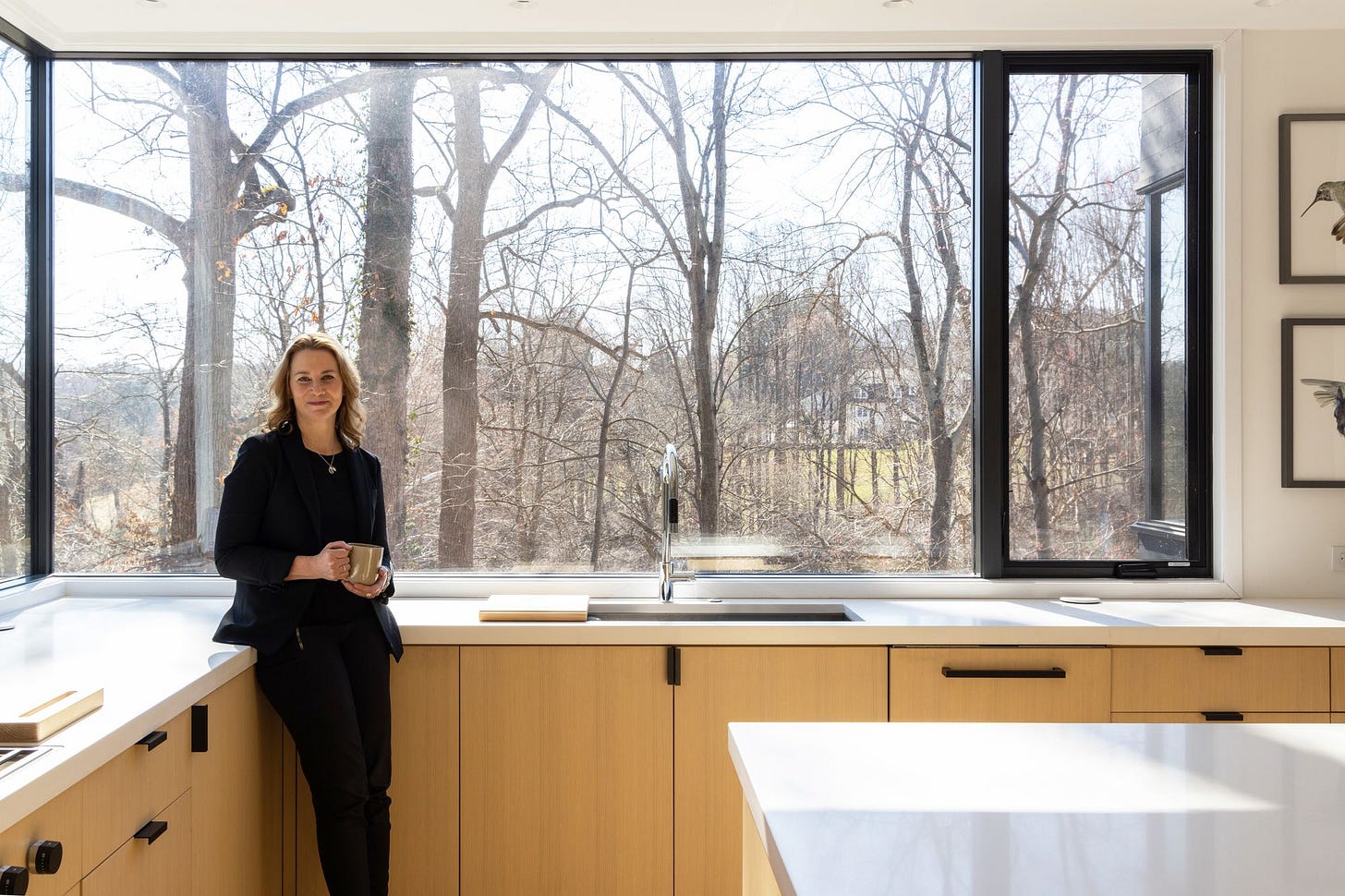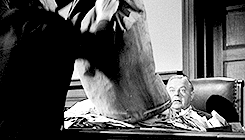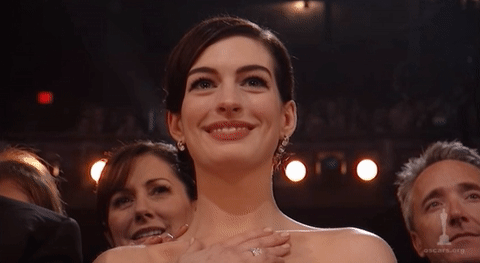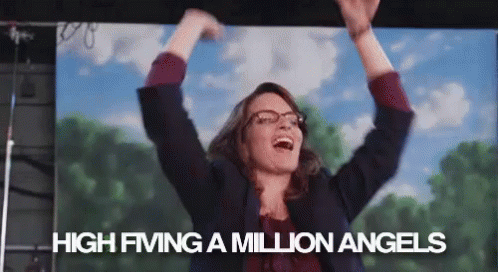Back in 2021, my architect Robert asked
if I would be ok publishing the home we built together — my healing-oasis, nature-temple, connection-generator “treehouse”. It had been just as much a labor of love for Robert as for me. And as a business person, I understood (and wanted!) the positive impact publicity would have on his practice.
Yet I hesitated. Our privacy standards around the Deagle household rivaled the national security apparatus surrounding us here in the suburbs of Washington, DC. (Langley, anyone?) We didn’t do social media. We didn’t publish pictures. We kept it all under wraps. Private.
But as the months and eventually years snuck past since Robert’s ask, a different timeline began unfolding in my mind. If the house were published, maybe I could use the publicity to tell my story. And maybe my story would mean something, inspire someone, free my idea of changing the conversation around death from the echo-chamber of my mind (and occasional conversations with the lady helping me find hiking boots at REI) to impact the world at large.
Twenty months later, with trepidation, I agreed.
And another four months later, my home and my story were published in the WSJ. (Shoutout to Robert’s publicist, Andrew Huff, and the WSJ reporter, Nancy Keates, for believing this story was worth sharing!)
Reaction to the article was swift. Not even an hour after it was published online (and still 24 hours before it would be available in print) I began getting emails. Texts. LinkedIn requests. Substack subscriptions. Eventually even letters (physical letters!) from co-workers, friends, and strangers. From people wanting to sell me things or ask me on a date (wait, what?).
Most of the feedback was heartfelt and appreciative:
“Thank you for sharing something so personal.”
“Thank you for being so brave and telling your story.”
“A highly moving, courageous, and inspiring article.”
“I am nine months into losing my spouse. Thank you for showing me what the future can look like.”
“Divorce may not be the same as death but your story makes me think I can make it through this terribly painful time.”
“You are an inspiration.”
Before all else, I want to thank everyone who wrote to me, messaged me, posted comments here and on LinkedIn.
I see you. I see you seeing there is another way to do this “grief thing”. And when I say that I am honored to be your lighthouse in whatever storm you find yourself in — for a moment or for decades — know that I am expressing the burning-bright truth of my heart.
While the outpouring of gratitude from the WSJ article
has left me humming and bouncing and honestly over-stimulated, I was also surprised. What I shared in that article did not feel brave or inspiring. It felt essential. Crucial. Utterly necessary.
It felt like speaking the truth.
So why is it such a big deal to share personal truth in today’s day and age? Especially when it’s about loss and grief — an initiation by fire that few humans manage to escape.
After speaking to my mom, my friend Ken, my daughter — really anyone who would talk to me about it — here are the main reasons we came up with for why people are afraid to share intimate, difficult truths:
Exposing vulnerability.
Feeling further sorrow from reliving events.
Saying something wrong and making someone else suffer more.
Not so long ago, these concerns (piled on top of “privacy mode”) had stopped me from sharing my story. But obviously something has given way. It took the WSJ article reaction and a flight to the Middle East and back for me to realize just what.
Simply put, the seemingly immovable tectonic plates of my priorities have, well, moved. It was such an unmeasurably slow process that I hardly noticed… until they shifted so much that, out of the blue, I emailed Robert back with a “let’s do it.”
On this other side, I realize I will never value appearances, staying in my comfort zone, protecting others’ comfort zones, nor only experiencing and expressing “positive” emotions like I once did.
(Which is also why I’m finally breaking my grief silence on LinkedIn. Terrifying and exhilarating!)
I have been too changed. Too moved by the good I can do by living my life in the opposite way.
Today, the desires of my “small self” (based on fear) are no match for the dreams of my “big self” (based on expansion, inspiration, imagination).
I have gotten out of my own way.
But I can’t take credit for it. It was loss and grief that taught me what really matters… and what simply doesn’t.
Despite what I initially feared,
sharing my story has not equated to more suffering nor embarrassment nor feelings of being exposed. In fact, I am suffering less. Much less. I am galvanized, energized, mobilized. It is cathartic beyond imagining to make meaning from my loss by helping others…
By planting seeds in your mind, dear reader, that you can make it through.
As Brené Brown explains in only the way she can, “Vulnerability is the birthplace of love, belonging, joy, courage, and creativity. It is the source of hope, empathy, accountability, and authenticity.
“If we want greater clarity in our purpose or deeper and more meaningful spiritual lives, vulnerability is the path.”
Now, I can’t imagine choosing the flimsy illusion of self-protection — by hiding my story, airbrushing my wounds, pretending to be Superwoman — over splaying my heart open to receive support and offer solace… To relieve others of their suffering and isolation. Their false belief that this is how it is; that they don’t have a choice.
My purpose, my impact, my vibrant life have far too much potential to hobble them in hopes of hiding something that anyone can discover through google.
Looking back, only now do I realize how far I’ve come… and therefore how far we can all go, individually and collectively!
“Something has been lost here,
vanished beyond living memory: a fluency in the experiences that have patterned humanity since we began.
“We have surrendered the rites of passage that used to take us from birth to death, and in doing so have rendered many parts of our existence unspeakable. We witness them anyway, separately, mutely, in studied isolation from our friends and neighbors who are doing the same. Centuries of knowledge are lost in this silence, generations of fellowship.“ - Katherine May in Enchantment.
The article, me, my story, my willingness to tell it seems exceptional… But why? Because we’ve lost the art of talking about life. About the things that really happen. About how to get through them. Face to face. With each other.
Of course we are afraid of this conversation… No one ever taught us:
It is natural to experience these hard and painful emotions.
Words we might use to express them or console others experiencing them.
We will survive.
But that doesn’t mean we can’t figure it out anyway. Stubbornness has already brought many of us this far!
Let’s re-create the muscle memory of talking about loss. Let’s learn how to sit with each other and let the tears flow. Let’s practice walking through loss with those we love, as a community, a society, heck… a nation and a world.
Like the synchronized movements of a Tai Chi gathering, our approach to loss should mimic that flow. Not one person off by themselves flailing through moves no one ever taught them, awkward, exposed, alone.
I’m not that different from you.
Yes, I have shared something few share. But my tectonic priorities are only a few millimeters from yours… just far enough to tip the scales in the direction of opening, sharing, connecting.
That’s all it takes. A straw to break the camel’s desire to be. so. strong. and. never. admit. vulnerability!!!
So let’s zoom in — from the big picture to the straw. To the little shifts that bring us closer to who we want to be.
When you find yourself sliding into a mental or emotional space you don’t want to be in (defensive and shut-down for example), what are your hacks for pulling yourself out of it and into your courageous, authentic, unapologetic self?
It can be about vulnerability or whatever else feels brave and bright for you these days.
For example when I feel my body tensing with the desire to self-protect, either against my own vulnerabilities or the suffering of others, I uncross my arms.
I leave my actual, physical heart exposed.
I even lean in a few degrees.
It is a deliberate, awkward, borderline painful effort but by shifting my body, my mind starts to follow suit. I remember that I am not in danger, that vulnerability will not expose me to pain but actually open me to connection and fulfillment and purpose.
It helps me to focus on these small steps, letting them pile up over time… so I eventually end up taking a big step without even realizing it.
Slowly but surely,
Sue
P.S. The Wall Street Journal is making a short video
about me and my treehouse! The film crew is coming Monday! I am unsurprisingly very excited and very nervous. The way I like it… feeling it all!
Anyway, wish me luck! And I’ll be sure to share it with all of you as soon as it’s published.











To answer your question - and this is kind of corny, I admit - I go on Youtube and watch the scene from Any Given Sunday when Al Pacino gives a motivational speech to his football team. It gets me every time even though I know most of it by heart.
Also this was an excellent post! You are a great writer.
Good luck, Sue! You'll be great! And I really do hope we will all soon learn that there is no strength without vulnerability, and how much strength it takes to be vulnerable. We can face what scares us and causes us pain. There are others willing to help. Like you. And, Difficult Run? Love it! xo